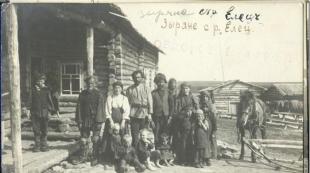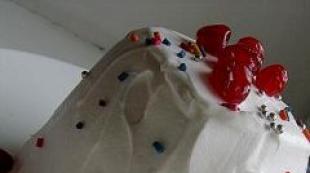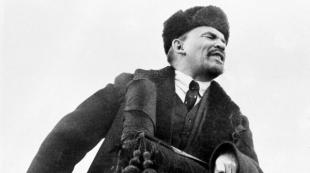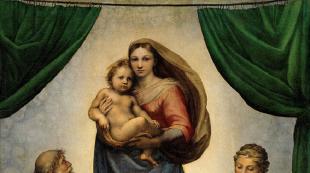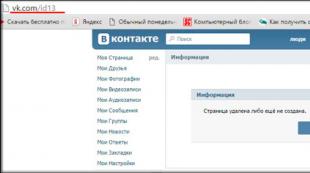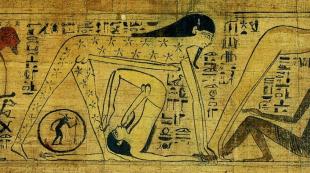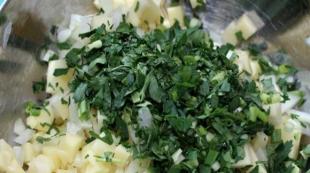Easter table. What should be on the table on Easter. Easter table: getting ready to celebrate the bright holiday of Easter What foods are on the table at Easter
This Sunday, April 8, all followers of the Orthodox Church will celebrate one of the most important religious holidays of the year - Easter. Preparations for Easter begin a week before the holiday itself: cleaning the house (Maundy Thursday), preparing some dishes and painting eggs. People try to organize everything in such a way that on the holiday itself they do not do any work, but devote themselves to the celebration and, of course, attending church services.
The main ritual dishes for Easter are eggs painted in different colors, Easter cakes and Easter cottage cheese.
Painted eggs are a direct symbol of the tomb and resurrection of Christ. A dead shell on the outside and life on the inside. Traditionally, eggs were painted red, symbolizing the blood of Christ, but later came the custom of painting eggs in different colors and even artistic painting on them. In the world today there are numerous museums of the so-called Easter eggs - painted eggs. This, of course, is no longer food, but real art. At home, eggs are most often colored by boiling them in onion skins, giving them a characteristic brown color. It is customary to bless such eggs in church before eating them. By the way, it is customary to paint eggs in advance - a couple of days before Easter itself, and another week after it.
My late grandmother told me how in Belarusian villages they started collecting eggs for Easter almost a few weeks before the holiday, and on Bright Sunday they walked down the street, filling their pockets full of them, and bumping into each other. This game was called “Christ”, and the winner in it was the one whose egg did not break as a result of the battle. He also took the winner’s egg for himself. After the holiday, when the number of eggs in the house did not allow them to be eaten in their pure form, okroshka and green cabbage soup were prepared from them.
“The egg applies to all creatures,” says an ancient handwritten interpretation attributed in ancient times to St. John of Damascus, “the shell is like the sky, the chaff is like the clouds, the white is like water, the yolk is like earth, and the dampness in the middle of the egg is like the world.” sin".
Another well-known symbol of Easter is Easter cake. Easter cake is a special type of ritual holiday bread, which is traditionally baked from yeast dough on Maundy Thursday, that is, two days before Easter. On Saturday, on the eve of the holiday, it is also consecrated in the church. Kulich is a semblance of church artos - large leavened bread, its folk, “homemade” variation. In Russian practice, artos is a tall cylindrical bread, consecrated on the first day of Easter at the liturgy after the prayer behind the pulpit, which is distributed to believers on Bright Saturday after reading the prayer and crushing.
Cooking Easter cake is also a real sacrament in itself. Its main feature is not the ingredients, but the correct cooking technology. You should start preparing Easter cake only in a good mood, then the Easter cake will turn out successful, and next year everything will be fine in the house.
Cottage cheese Easter is another central dish of the festive Easter table. To prepare cottage cheese Easter, you need a special detachable Easter pan in the shape of a truncated pyramid, consisting of 4 planks. The curd mass is placed in a pan and pressed, taking the form of a truncated pyramid, which symbolizes the place of the crucifixion and death of Christ. Among other things, curd Easter is an excellent curd dessert with the addition of dried fruits and nuts, which will appeal to both adults and children.
In general, Easter is considered a collective holiday. It is celebrated widely and cheerfully - with festivities, egg fights and obligatory treats for friends and neighbors. On this day, they certainly bake a lot of pies, buns, buns and other sweet dough products and give them to all nice people. The more generous you are on Easter, the more successful the next year will be for you. Joy must be shared with loved ones, not forgetting, of course, those in need. The very ritual of congratulating Easter, when people kiss each other on the cheeks three times, saying “Christ is risen,” shows us that kindness and attention to others are important elements of the holiday.
And, of course, in addition to pastries and desserts, the festive table must certainly be filled with main dishes that will please the eye and stomach. Here is a sample list:
- aspic and aspic (and Easter in Slavic countries does not always fall on warm spring days; sometimes there may still be snow on Easter);
- baked poultry (whole baked chicken, duck or goose is one of the main delicacies of Russian and not only Russian cuisine);
- boiled pork and sausages (where would we be without meat? Cattle used to be slaughtered especially for Easter);
- vegetable salads (if Easter coincides with the active onset of spring);
- pickles (remnants of winter stocks, if fresh vegetables have not had time to ripen);
- pies with a wide variety of fillings;
- homemade wines;
- sbitni.
To put it simply, at Easter it was customary, and still is today, to put on the table all the best and most delicious things that are in the house. There is no better occasion for a housewife to show off her culinary skills than Easter. After all, before that there was a grueling Lent, and after that the spring suffering will begin, when there will be no time for the holidays. So Easter is such a reason to stop, have fun, relax after winter and get back to work. Easter is the king of days, as the saying goes.
Easter table designed to emphasize the greatness of this holiday. Previously, in wealthy families it was customary to put whole forty different dishes- as a reminder of the forty days of Lent preceding Easter. Of course, it is not at all necessary to be so sophisticated; the main thing is to make sure that the obligatory dishes are present on the festive table.
Easter table in the old days they covered it for the whole day. Family and close friends gathered behind him in a close circle, who had not seen each other for a long time, because it was not customary to visit during Lent. On this day, holiday cards were signed and sent to distant relatives and friends.
After dinner, they began to play various games and fun, went out into the street to congratulate each other - the day passed joyfully and festively.
People prepared for the great and bright holiday of the Resurrection of the Lord for seven days. On Thursday they started baking Easter cakes and Easter cakes. For the main holiday of all Christian believers, these confectionery products were baked in a special way: the dough was prepared only with yolks. And it could only be baked on birch logs.
Flour for holiday baking must be sifted. A few days before the bright holiday, the dough was placed in a warm, dark corner of the house so that it could brew. They put their soul into the preparation. Basic household chores faded into the background; the whole day was devoted to preparations for the bright holiday.
So, what dishes are on Easter must be on the table?
Main Easter dishes- these are colored eggs, Easter cake and cottage cheese Easter. Each of these dishes has its own symbolism, which we will talk about a little later. In addition, to Easter table they bake rum baba and honey gingerbread in the shape of animals, and prepare a variety of meat dishes. But the fish on Easter table It is not accepted to submit, although there are no prohibitions in this regard.
Hot dishes are usually not prepared for Easter, so as not to force the hostess to run from the festive table to the stove and back, but to give her the opportunity to calmly celebrate with everyone. It is customary to cover the Easter table with a light tablecloth, ideally white. The Easter table must certainly be beautiful, plentiful and tasty.
Easter cake
Easter cake blessed in the church is an obligatory dish on the holiday table. Easter cake is made from very rich yeast dough, thanks to which the cake does not go stale for a long time. The size of the cake can be different, but it must be tall. Candied fruits, dried fruits, spices, and nuts are often added to the cake, and the top is covered with powdered sugar or icing.
It is with the blessed Easter cake that the Easter meal begins., breaking his fast after Lent. Most often this happens at home, when the head of the family divides the Easter cake according to the number of household members. But sometimes they break their fast with Easter cake right in the church, immediately after the end of the Easter service, treating each other and the clergy to pieces of their Easter cake.
Curd Easter
A traditional Easter table is not complete without cottage cheese Easter - a special dish made from cottage cheese, which is prepared only once a year especially for the holiday of Easter. Easter has the shape of a truncated pyramid, which symbolizes the Holy Sepulcher. To prepare Easter, you need a special collapsible wooden form - a pasochnitsa.
On the inside of the planks from which the bean box is made, the letters XB are cut out - the initial letters of the words that make up the traditional Easter greeting “Christ is Risen!” In addition, they carve on the boards symbols of the suffering and resurrection of Jesus Christ- spear, cross, cane, sprouts, flowers, sprouted grains. All these images are imprinted on the finished Easter.
Painted eggs
What's an Easter table without colored eggs? According to legend, Holy Equal-to-the-Apostles Mary Magdalene came to the Roman Emperor Tiberius, announced the resurrection of Jesus Christ and presented him with a chicken egg. The emperor did not believe it, saying that this could not be, just like a chicken egg cannot be red. After these words, the chicken egg that the emperor was holding in his hand at that moment turned red.
Red color is a symbol of the blood shed by Christ for all people. But besides red, Easter eggs are painted in other colors. Easter eggs are usually painted on Maundy Thursday, and they are consecrated on the night from Holy Saturday to Sunday. You can simply color the eggs with onion skins or food coloring, or you can work hard and paint the egg with unusual patterns, turning it into a real work of art.
Easter is a holiday that is usually celebrated with family.
Let a beautiful and plentiful Easter table become a symbol of prosperity and well-being in your family.
Source: strana-sovetov.com
The main decoration of the holiday table is, of course, Easter.
Traditionally, it was always prepared with lots of butter, sugar and eggs. Below are recipes for Easter dishes.

Ingredients:
Unleavened cottage cheese – 500 g. Granulated sugar – 300 g. Butter – 250 g. Egg – 4 pcs. Raisins - half a glass
Preparation:
1. Boil two hard-boiled eggs
2. While the eggs are boiling, mix the cottage cheese and sugar until smooth. Add pre-softened butter to this mixture and mix thoroughly.
3. Peel the boiled eggs, separate the yolks and add them to the curd mixture. Mix thoroughly again, trying to grind the yolks.
4. Break two raw eggs into this mixture and mix again.
5. Peel, sort and thoroughly rinse the raisins.
6. Add to the curd mixture and mix again.
7. Line a colander with gauze. Transfer the prepared mixture onto it. Cover the top with the same gauze. Place under a load of about 3 liters of water. And put it all in the refrigerator for 7...9 hours.
8. Place the finished Easter cake entirely on a plate and decorate with raisins, candied fruits or chocolate chips.
Curd Easter ready.

Ingredients:
cottage cheese from the press about 450 grams, 120 grams of butter, 100 grams of raspberry syrup, 50 grams of sugar, 2 chicken eggs, a little more than a glass of good sour cream
Preparation:
First of all, we rub our cottage cheese through a sieve and mix it with raspberry syrup. The next step is to add eggs and sugar, and then butter and sour cream. Mix the mixture well and place it in a mold that has been previously lined with gauze. We put it under so-called oppression for five hours in a cold place.
Easter should be decorated with something original and bright.

Ingredients:
400 g cottage cheese, 400 g 25~30% sour cream, 200 g white chocolate, 1/4 cup milk,
~0.5 cups of dried fruits and candied fruits.
Preparation:
Pour milk into a small saucepan, add broken white chocolate, place over low heat and bring until the chocolate is completely melted. Mix cottage cheese, sour cream, melted chocolate (warm), candied fruits and steamed dried fruits.
Moisten a thin, dense cloth with water and line the bean box with it.
Place the curd mass in a bowl, place a weight on top and leave for a day to drain excess moisture.
After 6~12 hours, put the structure in the refrigerator.
Place the finished Easter on a plate, remove the mold and cloth.
Store Easter in the refrigerator before serving.
When cutting, it is advisable to wet the knife in hot water and then wipe it dry with a napkin.
Easter with dried apricots

To prepare Easter you will need: 300 gr. cottage cheese, 200 gr. dried apricots and 100g. Sahara. Wash dried apricots and boil in sugar syrup. Squeeze out the cottage cheese, mix with chilled dried apricots and rub the mixture through a sieve, then wrap the curd circle in a thick cloth and hold for 3 hours under pressure in a cool place. Having given Easter a strict, “classical” shape, it can be decorated with prunes or candied fruits.
When starting to bake Easter cake or Easter baba, it is very important to remember that the dough for this baking loves only fresh ingredients, and, most importantly, the warmth of human hands, which means you should not use a mixer during the cooking process. You should not start kneading if you are sick or tired - the dough simply will not rise!

50 gr. dilute yeast in 1 tbsp. warm milk, adding 1 tbsp. granulated sugar. After the fermentation process has begun, pour the dough into a container with 0.5 kg. flour, salt, add 8 yolks, mashed with 50 gr. sugar and mix thoroughly. After the dough becomes elastic and begins to “lag behind” your hands, pour in 3 tbsp. melted butter and knead again. Pour 100 g into the finished dough. soaked raisins, place in a mold, filling it 1/3 full and leave for 2 hours to “settle.” When the dough has increased significantly in volume, brush the top with egg and bake at 200 degrees. within 1 hour.
The finished hot cake can be filled with fondant or covered with vanilla sugar.
For making fudge 150 gr. Grind powdered sugar with boiled water, gradually adding juice from half a lemon and rum essence. When the mixture becomes “airy” and shiny, the fudge is ready.
Ingredients:
For the test:
yeast - 75 g, eggs - 7 pieces, milk - 2 tbsp., sugar - 100 g,
flour - 9-10 tbsp., butter - 150 g.
Preparation:
To prepare the dough, take warm milk, yeast, half the flour and mix. Sprinkle the finished dough with flour and leave it warm for an hour. Then add flour and knead the dough until it stops sticking. Beat the egg whites until foamy, add them to the dough and mix again, adding flour to thicken the dough. Place the bowl with the mixture in a warm place and cover with a towel on top.
Place the finished dough on the table and divide it into two parts, of which the larger part is the base of the cake, the small part is for decoration. Place the Easter cake in a round frying pan, the surface of which is greased with oil and sprinkled with flour, make decorations from the remaining dough and leave in a warm place to proof. Grease the risen cake with butter and bake until done.

Ingredients:
For the test:
flour – 4 tbsp., eggs – 15 pieces, sugar – 690 g., milk – 4.5 tbsp.,
yeast – 100 g, butter – 1 kg, salt.
Preparation:
To prepare the choux pastry, thoroughly mix the flour and hot milk and cool to normal temperature. Dissolve the yeast in a small amount of heated milk, add it to the brewed dough and leave the resulting mixture warm for at least one hour.
Beat the yolks well with sugar, add to the risen dough and mix. Beat the whites into a thick foam, add them to the dough and mix. Place the finished mixture in a warm place for a second rise.
When the dough has risen, gradually stir in the melted butter. Rub the baking pans with butter and sprinkle with flour, then lay out the finished dough. After the dough has doubled in size, cover its surface with yolk and bake until done at 170-180 C.
Ingredients:
For the test:
flour - 5 tbsp., sugar - 55-60 g, yeast - 25-35 g, flour - 1 1/2 tbsp., milk - 2 1/4 tbsp., melted butter - 180 g.
For flavored sugar:
sugar – 230 g and any of the flavors: vanilla – 2 g,
orange zest, ground coffee - 3.5 g, rose oil - 8 drops, rose petals - 0.5 cups
Preparation:
To prepare aromatic sugar, grind it with any of the proposed flavors.
For the Easter cake, prepare the choux pastry: mix flour and a third of hot milk, cover and leave for an hour. Add the remaining milk, yeast and a quarter of the aromatic sugar to the brewed dough. Add a little flour, stir, cover with a towel and leave warm. After the dough has risen, pour in warm melted butter, add the rest of the flour and knead the dough from which we make Easter cakes.
The cakes must rise before baking.
Kulich "Early ripening"

Ingredients:
For the test:
yeast – 10 g, sugar – 460 g, milk – 3 tbsp., flour – 6 tbsp.,
butter – 400 g, eggs – 3 pieces, raisins (seedless) – 380 g.
Preparation:
From a glass of hot milk, sifted flour, granulated sugar and softened butter, knead the dough, to which we add the yeast dissolved in the remaining milk. Leave the dough for at least an hour to rise.
Separate the yolks from the whites, beat the latter into a thick foam, rub the yolks with sugar. Gradually fold into the risen dough and add raisins.
Place the dough in a mold greased with butter or margarine and bake until done. Baking temperature 170-180 C.
 Ingredients:
Ingredients:
Egg - 2 pcs., Sugar - 1 tbsp., Sour cream - 200 g., Condensed milk - 4 tbsp., Flour - 9 tbsp. with a slide., Breadcrumbs. Cocoa - 2 tbsp., Soda - 1 tsp.
For cream:
Liqueur - 2 tbsp, Condensed milk - 150 g, Sour cream 30% - 200 g, Butter - 200 g. Vanilla sugar - 2 bags.
For decoration:
Prunes - 150 g., Dried cherries.. Sugar - 3 tbsp. Red wine.
Preparation:
1. Beat eggs with sugar, add sour cream, condensed milk, soda, slaked with vinegar, salt on the tip of a knife and flour. Knead the dough well.
2. Use half the dough to bake a crust on a square baking sheet, greased with margarine and sprinkled with breadcrumbs. Add cocoa to the second half of the dough and bake another cake. Cool.
3. Place the cakes on top of each other and cut out an oval egg shape. Cut the chocolate cake into two layers.
4. Beat butter with condensed milk and sour cream, add a bag of vanilla sugar. Add some liqueur to 1/3 cup of boiled water.
5. Assemble the cake. Place the dark cake on an oval dish, soak it in liqueur, and coat generously with cream. Place a light cake on it and repeat the same operations. Cover with dark cake layer, soak again in liqueur and spread with cream.
6. Steam prunes with boiling water, remove the pits, squeeze lightly, cut into pieces. Mash the cake scraps with your hands in a bowl with prunes and the remaining cream. Place in a mound onto the cake, forming an egg shape, smoothing the edges. The bottom of the cake is slightly rounded inward. Use a knife to smooth out any uneven surfaces and place in the refrigerator for 2 hours.
7. Melt over heat in 1 tbsp. spoon of boiling water 3 tbsp. spoons of sugar, bring to a boil, stirring all the time. Beat 1 chilled protein into a strong foam, continuing to beat, pour boiling syrup into the protein at the moment when the sugar boils evenly with bubbles, and immediately pour in the juice of a third of a lemon and add a bag of vanilla sugar. You should get a snow-white light cream with which to decorate the cake. Place cherries steamed in red wine along the edge of the cake.
But, besides Easter cakes, you can prepare other festive dishes for Easter.

From 0.5 kg. flour, 250 gr. melted butter, 1 tbsp. sugar and 1 egg yolk, quickly knead the shortbread dough and bake in a hot oven until ready, pricking it in several places with a fork.
The cream is prepared from 500 gr. cream and the same amount of sugar, 100 gr. butter and vanilla. After mixing the ingredients, grind them thoroughly and cook over low heat until sour cream thickens, stirring constantly.
Pour the prepared chilled cream over the mazurka and sprinkle chopped nuts on top.

200 gr. Grate “Russian”, “Dutch”, “Swiss” cheeses and Parmesan cheese on a fine grater, add 400 gr. softened butter and 150 ml. rum or cognac. Mix everything thoroughly and place in oil dishes.

For a one and a half kilogram portion of the dish you will need: 1.5 kg. ham, 100 grams each, red wine and butter, 5 pcs. dry cloves, zest of one lemon and 1 tbsp. flour and sugar.
Pour softened butter and wine over thin slices of ham, add the remaining ingredients and simmer over low heat for 10 minutes.

Salt the gutted pig on top and inside, stuff it and bake on a wire rack. You can stuff it with liver and lard, minced through a meat grinder and flavored with beaten yolks and a small amount of white bread; liver, grated with buckwheat or rice porridge, as well as rice porridge with boiled eggs and green onions added to it.

Salt the freshly plucked and gutted duck inside and out, tuck the legs into the cuts made at the bottom of the carcass and fry in a saucepan until half cooked for 30-40 minutes. then divide the duck into 6 parts and place in a baking dish.
To prepare the sauce, in the saucepan where the duck was cooked, brew 2 tbsp. broth 1 tbsp. flour. After letting the liquid boil, remove the fat, add the juice of 3 oranges and 200 ml. white wine, then boil again. Place 2-3 oranges, divided into slices and peeled from seeds, into a mold with pieces of duck, pour over the prepared sauce and bake in a hot oven until cooked. When serving the dish, oranges serve as a garnish for the meat.

Boil and cut into apple slices 1 kg. beets. Add 300 gr. boiled and finely chopped prunes, 200 gr. any crushed nuts, 1 onion, fried in 100 gr. vegetable oil and 2 tbsp. liquid honey. Mix everything thoroughly. For additional flavor, add 1-2 tbsp to the beets. ground coriander seeds.

To prepare the dish, apples, onions and chicken are taken in equal portions. Boil the chicken with the onion, celery and carrots, cool and chop finely. Peel and chop green apples. Separately chop the onion. Mix all the salad ingredients thoroughly and season it with mayonnaise.

Take approximately equal quantities of fillets of several types of fish, squid, peeled shrimp and crab meat, cut into small longitudinal bars, dip in batter and deep-fry.
To prepare the batter, beat until thick and creamy and add 3 eggs, 0.5 tbsp. beer and 100 gr. flour.
Bon appetit!
There are several holidays associated with the Resurrection of Christ. They do not have fixed dates, and the day of celebration is counted from the Resurrection.
- LAZARUS SATURDAY AND THE ENTRY OF THE LORD INTO JERUSALEM - Saturday and Sunday before Easter;
- ASCENSION - Thursday, 40 days after Easter;
- HOLY TRINITY (Descent of the Holy Spirit on the Apostles) - Sunday, 50 days after Easter;
- ALL SAINTS - Sunday, a week after the Holy Trinity;
- ALL SAINTS IN THE RUSSIAN LAND SHINED - Sunday, a week after All Saints.

Orthodox Christians around the world are preparing to celebrate the bright holiday of Easter.
One of its obligatory attributes is the ceremonial table, on which especially plentiful and varied food is served on this day.
In the old days, after a forty-day fast, wealthy families put forty different dishes on the table.
The festive meal on Easter Day should reflect church symbols, so there are certainly three main dishes on the table that are blessed on Saturday in the church: Easter cake, colored eggs and Easter cottage cheese.
Easter eggs
The red egg is a special symbol of Easter. The biblical legend testifies that Mary Magdalene came to Emperor Tiberius with incredible news - Jesus has risen!
The only way to convince the ruler that a miracle had happened was to use another miracle.
Maria extended her hand to the emperor, in which lay an ordinary egg, and said: “Before your eyes, this egg will now turn red, and this will be evidence of the miracle of the resurrection.”
A few moments later, that’s exactly what happened – the egg turned red.
Historians of Christianity claim that since that time, the painted red egg has become one of the ritual attributes of Easter celebrations.
At the beginning of the festive prayer service, clergy and monks exchanged such eggs; later the tradition was supported by believers.
The Easter egg has many purposes: people begin breaking their fast on Sunday mornings, they give it to friends and relatives, godchildren and godparents, they take it to the churchyard to remember loved ones.
Initially, holiday Easter eggs were only red, later they began to be painted in other colors, and then iconographic images and other subjects began to be drawn on the shells, and patterns were painted.
Depending on the type of coloring, Easter eggs are called differently: krashenka (the egg is painted in one color), speckled (there are specks, specks, stripes on the shell), pysanka (with an ornamental or plot design).
Natural dyes, in addition to traditional onion skins, you can use turmeric (gives a golden nuance), red cabbage soaked in table vinegar (vitamin color), dried violet flowers infused for 6-8 hours in lemon juice, and dark grape juice (pampered lavender hue ), birch buds or spinach leaves (herbal color).
Eggs boiled in natural coffee can acquire shades from pink to noble dark brown.
With the help of threads, rags and cereals attached around the egg, you can achieve a variety of interesting uneven colors.
For example, the “Watercolor” painting method: you need to boil an egg, dry it dry and place it hot on a special stand or glass.
On the dry egg, before it has cooled, draw the desired design with watercolor paint. On a hot egg, the paint dries in an instant and does not smear.
“Dinosaur eggs.” Wrap dry eggs tightly with pieces of gauze, securing its ends with an elastic band, and lower into a solution of some food coloring.
The white streaks that remain from the gauze will resemble the skin of a dinosaur.
“Marble eggs.” Dilute food coloring in water, preferably dark colors. Add 0.5-1 tablespoon of vegetable oil and lower the already boiled eggs into it.
The water should cover the eggs entirely. Keep the eggs in water until the desired color is achieved. Then remove them from the water and wipe the shells dry to remove any remaining oil with a paper napkin.
Easter cake
An obligatory attribute of the Easter holidays is bread.
Christian scientists claim that the tradition of celebrating the Holy Resurrection of Christ with bread specially prepared for this purpose has earlier, even Old Testament origins.
Tradition says that when leaving Egyptian captivity, the Jews did not have time to leaven their bread, so they took unleavened dough with them.
In field conditions, they were able to prepare only the simplest flat cakes. Since that time, when celebrating Easter, Jews pray to God as a sign of recognition and gratitude and certainly partake of ritual bread.
Jesus Christ, the son of the Jewish people, did not break this tradition on the day of the last Last Supper, but only filled it with new content.
He broke unleavened bread and said that this was his body, which he was offering as a sacrifice for the sins of men.
After this, the rite of the Eucharist - communion - was introduced into the Christian church.
We would like to offer you a menu for Easter 2019 with photos and recipes that have become classics for this holiday. Easter in 2019 falls on April 28. It is advisable to plan your Easter menu in advance and start purchasing food little by little. This is a special holiday, special traditional dishes are prepared for it, Easter cakes are baked, eggs are painted (pysanky) and Easter cottage cheese is made. Christians observe Lent, which lasts seven weeks. The last days of Lent are especially strict, but on Sunday the brightest holiday of the year begins. Next comes the continuous week, when the entire week is meat-eating, unlike other weeks where fast days must be observed on Wednesdays and Fridays. All seven days the resurrection of Christ is celebrated, people rejoice, go to visit each other to celebrate Christ.
The main holiday for Orthodox Christians is Easter, which is traditionally celebrated in a warm family circle. The traditions and customs of this bright day reflect the colorful history of our ancestors and awaken the warmest feelings in our souls. One of the most pleasant and colorful traditions is Easter treats - colorful krashanki and pysanky, beautiful Easter cakes and tender Easter cottage cheese. We offer you an excellent option for the Easter menu, which combines traditional dishes and modern treats. If any recipe from our selection interests you, you can see step-by-step preparation with photos if you click on the name.
What should be on the table on Easter
According to tradition, the menu for Easter should include pysanky, Easter cakes, cottage cheese Easter, which can be replaced with a casserole with a lot of eggs, sausage, preferably homemade, a piece of boiled lard and a horseradish root. Other dishes are at the discretion of the hostess.
We invite you to choose several interesting dishes from what you can prepare for Easter on our website. All recipes have been tested and rated excellent by experts; the dishes are very tasty and beautifully presented. When you click on the title of the recipe you are interested in, detailed step-by-step preparation will open.

The main Easter dish that must be on the holiday table. Cottage cheese Easter is prepared from good quality cottage cheese, sour cream and dried fruits with nuts. It must be done in advance, since the curd mass must be under pressure for at least half a day.
Nowadays they sell special Easter bowls in which gauze is placed, and a mass of cottage cheese with candied fruits is laid out in it, but if you don’t have it, it’s okay, you can prepare cottage cheese Easter in a regular bowl.
To prepare we will need:
one kg of good cottage cheese of medium dryness and fat content;
a glass of sugar or half a glass of honey;
a total of two cups of chopped candied fruits (figs and raisins) and different types of nuts;
a glass of good fat sour cream, preferably homemade.
Sour cream can be replaced with butter; you will need 200 grams of it. Sugar or honey can be replaced (or used 50/50) with condensed milk. Take any dried fruits and nuts you like, as long as the total volume is no more than two glasses. You can grate a chocolate bar, then Easter will be with chocolate chips.
As an option, syrup from raspberry, strawberry or cherry jam is added to give a delicate pink color to the finished dish.
Preparation
Knead the cottage cheese very carefully, you can grind it through a sieve twice, add softened butter or sour cream to it, then the rest of the ingredients and knead everything properly. Line the container with gauze, lay out the prepared mass and cover the top with the hanging ends of the gauze. Everything needs to be crushed well, compacted and pressed. You put the entire structure in the refrigerator, and in the morning you carefully remove the finished dish.

Delicious snacks occupy a special place on any holiday table, and the Easter feast is no exception. We invite you to include an original, tasty and easy-to-prepare herring appetizer on your Easter 2018 menu. In order to please your guests with this wonderful dish, you will need: lightly salted herring fillet, red onion, green sweet and sour apple, mustard, vegetable (sunflower) oil, table vinegar, lemon juice, salt and ground black pepper, sugar, and green onions and lettuce. To prepare the marinade, you need to mix mustard, lemon juice, sugar, vinegar and oil, whisk everything carefully. Cut the peeled onion into half rings, grate the apple on a coarse grater, mix these ingredients and add ½ part of the marinade. Spread the resulting mixture evenly onto the herring fillet and sprinkle with salt and pepper. Roll the fillets into rolls, the ends of which are secured with toothpicks. Place the herring appetizer on a serving plate, sprinkle with chopped green onions, pour over the remaining marinade and garnish with green salad leaves.

The Gzhel painting technology involves brush strokes using two paints simultaneously and different pressure intensities. We offer you recipes with photos for Easter with the opportunity to color eggs using a unique technique. You will definitely succeed. First, practice for a few minutes on paper, it's actually easy.
To paint Easter eggs under Gzhel we will need:
eggs (can be brown);
gouache (acrylic paints) white and light blue;
furniture varnish;
palette or sheet of thick paper.
First you need to prime the egg with white paint. and then draw rose petals in blue. Next, draw in the leaves and fill in the background. When the egg is dry, coat the drawing with furniture varnish and dry it.
Easter eggs for Gzhel are ready.

A mandatory attribute of the Easter holiday table are fragrant tall and elegant Easter cakes. We offer you a recipe for a delicious Easter cake that will become an irresistible decoration for your table on the bright holiday of Easter. So, to prepare it you will need: fresh and dry yeast, butter or margarine, wheat flour, chicken eggs, milk, granulated sugar and vanilla sugar, salt, cognac, dried fruits (dried apricots, raisins, dried pineapple and dried cherries), and also candied fruits. For the glaze you will need chicken protein, vanillin, sugar and lemon juice. You will also need a little oil to grease the baking pan. Dissolve fresh yeast in heated milk, add sugar and dry yeast. Add a glass of wheat flour and mix thoroughly, put the dough in a warm place. Beat eggs with sugar, vanilla sugar and salt, add to the prepared dough. Then add raisins, which must first be washed and steamed, add chopped candied fruits and dried fruits. Then add melted and cooled butter (margarine) into the future dough and add cognac. Add the remaining flour and knead the dough. Knead the dough well and leave it in a warm place without drafts to rise. Then knead the dough and place it in greased molds. Leave the dough to rise again, brushing the surface with vegetable oil. Bake Easter cakes in a preheated oven until beautifully golden brown. Prepare the glaze by whisking the egg white with sugar, lemon juice and vanilla. Cool the finished cakes and decorate with icing.

Try to bake a very tasty Easter cake using a proven recipe. It must be prepared with soul and bright thoughts. It is advisable that no one interferes or gets in the way. We offer you a cake that tastes one of the best, and the dough does not go stale, no matter how long it sits.
Don’t be intimidated by the complex composition; in fact, the dough is quite easy to prepare, and Easter baking using this recipe always turns out great. See recipes with photos for Easter, and read a step-by-step recipe for making Easter cakes. Think positive and you will succeed.

Ever since the beginning of Easter celebrations, homemade sausage had to be on the festive table. It was prepared in advance, and then appetizing round pieces were boiled or fried, and placed on the table in dishes directly in rings, and pieces of boiled lard and always a horseradish root were placed next to it. Nowadays horseradish is grated and served in separate bowls, but before it was simply finely planed.
To make homemade sausages you will need:
pork and beef meat in equal proportions;
lard (half of one proportion);
packaging of intestines;
spices to taste;
tea soda, vinegar and garlic.
Everything is ground several times, the intestines are stuffed, and sausages are formed. Each sausage is tied with threads to form a garland. The finished product can be frozen and boiled, baked or fried before use.
See the detailed step-by-step recipe for Easter sausage with photographs; it is very easy and simple to prepare.

As a main dish, we suggest including chicken wings in honey sauce in the Easter menu. They cook very quickly, and the taste will surprise even the most sophisticated gourmets.
We will need a kilogram of chicken wings, 4 tablespoons of soy sauce, honey, sour cream and mayonnaise, one tablespoon each, grated ginger, garlic, salt and vegetable oil.
Prepare a marinade from soy sauce, honey, salt, ginger and garlic, place the wings there and leave for a while. then bake in a slow cooker or oven for about an hour, basting with the remaining marinade from time to time.
Sour cream and mayonnaise are used as garlic sauce and served with the finished dish.

Be sure to include the original Easter Egg salad on your Easter menu. It looks very beautiful and is no less tasty. For preparation you will need:
fried champignons with onions;
boiled eggs;
fresh cucumber;
a jar of corn;
ham or sausage;
olives;
green onions and dill;
mayonnaise, sour cream and salt.
You can use any ingredients, the main thing is to arrange the salad in the shape of an egg. But according to this recipe, it turns out very tasty and beautiful in cut, as if a real egg had been separated.

Very easy to prepare, but stunningly beautiful salad with pancakes “Bouquet of Roses” is prepared in advance. You need to bake a dozen thin pancakes without holes according to your favorite recipe.
In addition to pancakes, you need boiled beets, grated with garlic and smeared with mayonnaise, and the salad itself.
For the base of the salad you will need ham, fried mushrooms with onions, walnuts, boiled eggs and Korean carrots. Chop and mix everything, place on a plate in the form of a slide. Top with grated beets and mayonnaise.
Grease the pancakes with beetroot paste and roll them into rolls. Cut into 2 cm columns and place tightly on the lettuce, slightly opening along the cut line. Place greens between the pancake columns. It looks very beautiful, the taste is piquant and pleasant, and the shock of guests at the sight of a spectacular dish will more than compensate for the time spent on its preparation.

In the salad category, perhaps the most popular and delicious are chicken salads. Chicken meat goes well with many ingredients, so the taste of chicken salads is always tender and rich. We suggest you include a win-win salad with chicken and beans in your menu. You will need the following products: smoked chicken ham, fresh bell pepper, parsley, fresh cucumber, salt and mayonnaise, as well as beans canned in their own juice. Peel the chicken, wash the vegetables and herbs, drain the beans in a colander and rinse. Chop the chicken, herbs and vegetables, add beans, season with mayonnaise, salt and mix. Serve, garnished with greens.

If your family prefers fish dishes, then the best treat for your household will undoubtedly be juicy baked trout. In addition to the main ingredient - trout, you will need celery stalks, fresh champignons, lemon juice, onions and garlic, pepper and salt, cream, hard cheese, pickled cucumbers, as well as ground ginger and dried dill. Prepare the fish, rub with pepper and salt, sprinkle with lemon juice. Chop the onion, garlic and celery and fry until translucent. Add champignons, cut into slices. Then add dry spices, add cream and chopped cucumbers. Stuff the fish with the mixture, wrap it in foil and place it in the oven. Sprinkle the finished fish with grated hard cheese and return it to the oven (do not wrap it in foil) until an appetizing cheese crust forms. The taste of the dish is simply amazing!

A delicious meat dish is the basis of a festive feast. We invite you to prepare spicy baked pork ribs - a hearty and original treat that will fit perfectly into your Easter menu. In addition to the pork ribs, you will need olive oil, onions, pineapple juice, lemon, soy sauce, balsamic vinegar and sugar. Prepare the pork ribs and lightly roast them in the oven, turning them once during roasting. Chop the onion and fry until soft. To prepare the marinade, mix soy sauce, lemon zest and juice, pineapple juice, balsamic and sugar. Add the resulting marinade to the frying pan with the onions, heat and pour the marinade over the ribs. Bake until done.
 Subscribe to our channel in Yandex.Zen!
Subscribe to our channel in Yandex.Zen!
The most important spring holiday, which the entire Orthodox world joyfully celebrates, is Great Easter. It means the rebirth and renewal of all life in nature. With the onset of Easter, Lent, which lasted 40 long days, comes to an end, and festive Easter dishes appear on our tables, each of which is filled with a certain meaning. Traditional treats, appearing on the table once a year, symbolize the victory of eternal life over death.
The last, fasting week before Easter is considered the strictest, completely excluding meat, dairy foods, as well as fish and vegetable oil. However, starting from the middle of the week, experienced housewives begin to prepare for the bright holiday. These days, everything necessary for preparing the main Easter dishes is purchased - eggs, flour, cottage cheese, meat, etc. Immediately before Easter Sunday, the traditional dishes of the Easter table should already be ready for their solemn consecration in the church, which takes place on Saturday evening. Early in the morning you can begin breaking your fast, which will mark the end of strict fasting and the beginning of the holiday.
To create a cheerful Easter mood, you should think in advance about how to decorate the Easter table.
With such decorations, the Easter table will look fun and festive.
You can make bright artificial flowers with your own hands in advance, which are traditionally used to decorate Easter cakes and Easter cakes. Showing your imagination, it’s easy to make such flowers from colored paper and leftover bright fabrics. Children love to participate in preparations for the holiday, for whom there is always something to do. For example, cut out openwork paper napkins that will decorate the festive table, or paint eggs with beautiful patterns.
Prepare the most elegant dishes and a snow-white tablecloth for table setting. The table can also be decorated with fresh spring flowers. The whole environment should create a special, light mood.

Images of an elegant Easter table can be seen by famous artists. Makovsky "Easter table"
Traditional Easter dishes
It is impossible to imagine the Easter menu without its main dishes, which appear on the table only once a year. This, of course, is Easter cake, Easter cottage cheese and colored eggs. Also on the festive table there should be animal figures, among which the Easter lamb is a must. Carved from a piece of butter, simply laid with colored icing on top of a cake, or baked in a special mold, the lamb is a symbol of the sacrifice of Jesus, who gave his life to save people.

The Easter lamb always has a place on the Easter table
In addition, various meat dishes are traditionally placed on the Easter table, among which baked ham always takes first place. The holiday menu also includes turkey, veal, fried lamb, ham, various salads and cold appetizers. Among the variety of Easter treats, fish and hot dishes are missing.
Interesting fact: in ancient times, in rich families it was customary to put forty dishes on the table, according to the number of days of Lent. This amount of food is not a strict requirement for the Easter table. The main thing is that the Easter symbols consecrated in the church be present.
Easter cake
A real miracle of culinary art, Easter cake is the center of the festive table, without which it is impossible to imagine this bright holiday. A symbol of God's presence in our world, who cares for every living creature, Easter cake remains fresh for weeks. A fragrant, rich, sweet cake should be tall, topped with sugar glaze, sprinkled with multi-colored crumbs or chopped candied fruits. Also on the top of the Easter cake can be placed the capital letters ХВ or a figurine of an Easter lamb. It is customary to treat all acquaintances and strangers with slices of the blessed Easter cake, both in church and at home.

Kulich is a real miracle and a symbol of Easter
The dough for Easter cake is the subject of constant care for every housewife preparing for Easter Sunday. Starting on the night of Maundy Thursday, the dough for Easter cakes is put out, into which a piece of the soul is lovingly put, so that on Good Friday you can start baking. In order for the cakes to turn out especially tasty, you must follow some rules:
- start preparing the dough in a good mood, with a pure soul, because it is known that the dough perfectly senses the emotions of the cook, and may not be suitable if you are not in a good mood;
- for dough, use only fresh yeast; old or dried yeast is completely unsuitable for delicious baking;
- to make the cake airy, be sure to sift the premium flour several times, the secret is simple - as a result of oxygen saturation, the flour will make the cake more fluffy, and, of course, it must be dry;
- fill the mold halfway with dough, then the cake will come out looser;
- Sprinkle the finished cake with water and cover with a clean towel.
You can optionally add candied fruits, nuts, dried fruits or marshmallows to the Easter cake dough, in general, whatever you like.
Curd Easter
A special dish is prepared especially for the holiday of Bright Sunday - cottage cheese Easter, which also has its own symbolism, rooted in the Holy Scriptures. The shape of Easter cottage cheese is a truncated tetrahedral pyramid, which is a symbol of the Holy Sepulcher. To prepare it, you definitely need a special wooden form - a pasochnitsa, on the inside of which the letters XB are carved, as well as various symbols associated with the suffering that Christ endured. This is a cross, a spear, flowers, sprouts, etc. After the curd mass is removed from the Easter box, all these images will be clearly imprinted on the sides of the Easter. Keep in mind that raw Easter cooks faster, but does not last long. Custard Easter has a longer shelf life, but you will have to tinker with it longer.

Cottage cheese Easter - the crown of the Easter table
Cooking cottage cheese Easter also has its own characteristics and secrets:
- It is better to make raw Easter in small forms, for example in bowls or plastic glasses;
- custard Easter is prepared in a water bath;
- you need to prepare Easter only from fresh, well-squeezed cottage cheese, rubbed through a sieve, or whipped with a blender;
- if you add raisins to Easter, it is preferable to take light varieties, and it will be better if you grind them together with cottage cheese;
- It is better to chop nuts (almonds, walnuts, hazelnuts) with a knife.
Cottage cheese Easter prepared in advance will become the center of the Easter table. It can be decorated with icing and bright paper flowers on top.
Painted eggs
Multi-colored painted eggs - krashenki, or painted with fancy patterns - pysanka, decorate the Easter table, making it festive and bright. The long-standing custom of exchanging colored eggs has been known since the 1st century AD. Symbolizing the beginning of a new life, colored eggs are blessed during the Easter liturgy and distributed to family and friends. Traditionally, eggs were painted red, which signifies the joy of revival and triumph of the Christian faith. Housewives achieve the correct rich red color using ordinary onion peels. Today, with the help of various natural dyes, as well as ordinary store-bought paints, eggs can be painted in all the colors of the rainbow. Eggs that are plain, without patterns, are called colored eggs. These eggs have always been boiled; they are one of the main dishes for breaking the fast after a church, holiday service.

Multi-colored paints create a special festive mood
Traditional pysanky, which are transformed by the artist’s hands into real works of art, used to always be raw. The patterns on them had to correspond to the ceremonial vestments of the clergy, and were made only in certain colors. Today, coloring Easter eggs has become an exciting process in which adults and children take part with pleasure. On the holiday table, pysanky take pride of place next to the Easter cake, unlike krashenki, which are displayed on a separate dish.
Interesting fact: earlier in Rus', on Easter Sunday, grains of wheat or oats were specially sprouted in order to lay Easter eggs on the green sprouts.
Making an Easter menu
The Easter table, the traditions and customs of which are tried to be observed in every Orthodox family, should be plentiful, varied, with ritual dishes necessarily present on it. In addition to the three most important symbols, without which the Easter table is impossible, it should include various types of meat, vegetables and herbs.
To put traditional dishes on the Easter table, each housewife collects and preserves recipes throughout her life, passing them on from generation to generation. The main dish of the holiday menu can be boiled pork, baked pig or stuffed bird.

The basis of the festive table is boiled pork
These snacks can be decorated with Easter paper flowers. Many housewives put jellied meat on the table, cooked from several types of meat and poultry. Various light salads, vegetables and desserts will also perfectly complement the main dishes. Desserts can include fruits, sweet pastries - Easter cakes, buns, pancakes, pies, etc. Every year there is an increasing number of delicious dishes that are placed on the festive table. Don’t forget about drinks, without which the celebration is also incomplete. Classic Russian drinks are various types of honey, which must be prepared in advance. Fruit drinks, jelly, compotes, sbitni - all these drinks are enjoyed by adults and children. Red Cahors wine, which is consecrated in the church and symbolizes the blood of Christ in church rituals, also takes pride of place among festive dishes.
Bright Sunday is one of the few holidays that leaves no one indifferent; even hardened atheists are imbued with the bright spirit of this cheerful day. The festive table for Easter is so unusual and beautiful that it cannot be compared with any other table, even the most magnificent and bursting with all kinds of dishes. Our people were able to carry through the centuries all the traditions and symbols of this wonderful holiday.



